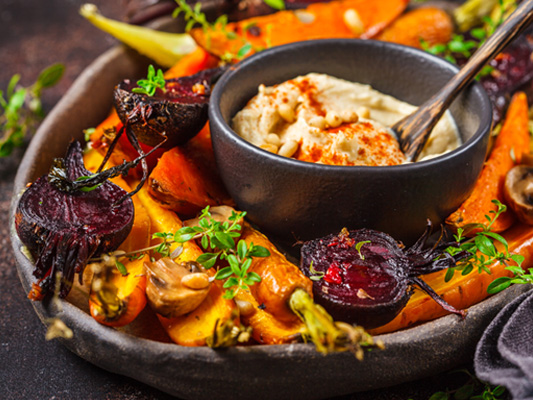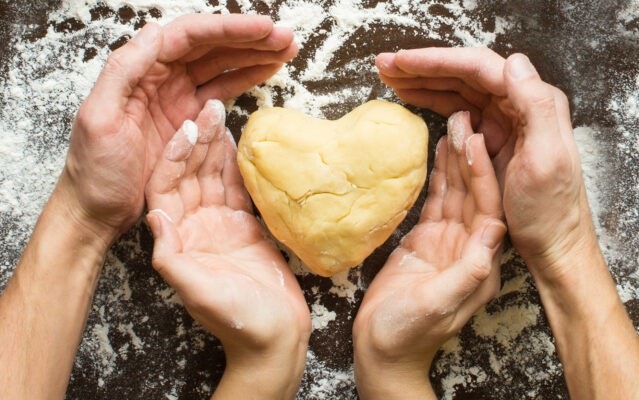Have you ever wondered why the mere mention of fast food triggers an immediate watering of the mouth? Or wondered why our cravings for sugar-laden doughnuts, salt-riddled fries, or fat-rich burgers are seemingly insurmountable? The thing is, our love for these elements – sugar, salt, and fat – runs deeper than our conscious desires; it’s deeply embedded in our biology. This piece seeks to unravel the science behind our collective fixation on these dietary constituents and explore how the fast-food industry capitalizes on our innate preferences.

The Unbeatable Fast-Food Trio: Sugar, Salt, and Fat
Let’s dive into the renowned ‘trifecta’: sugar, salt, and fat. The fast-food industry adores these three and banks on our inability to resist their allure: the sweetness of sugar, the flavor-enhancing power of salt, and the satisfying richness of fat. However, overindulgence could set us on a path towards severe health issues like diabetes, hypertension, heart disease, obesity, stroke, and fatty liver disease. The fact is, these substances can become rather addictive.
Imagine this scenario: You’re at work, and it’s someone’s birthday. You know the drill – there’s always a load of donuts or a big, sugary birthday cake. One day, you decide to switch things up and bring in a fruit platter instead. The reactions? Well, they’re mixed at best. There are a few appreciative nods, but mostly you’re met with confused looks and comments like ‘Where are the pastries?’ or ‘It just doesn’t hit the spot like cake.’ Transitioning from sugary, salty, fatty treats to healthier alternatives can be a real challenge when we’re so accustomed to that addictive trio.
So why does less sugar, salt and fat not taste as good, for many people? Why do fast foods, loaded with this trio, end up replacing traditional foods wherever they’re sold?
Well, it’s because sugar, salt, and fat are more like a holy trio to our bodies. They’re crucial for our survival. Our bodies treat them like precious gems. It used to be hard to get these guys, so we evolved to crave them. And when we suddenly have all we want, we kinda lose our balance with them. If we take a look back at our history with these foods, it’ll help us understand why we crave them so much and why we tend to go overboard once we’ve got an unlimited supply.
Both sugar and fat are like supercharge buttons for our bodies. They provide the energy we need for heat, movement, and maintaining the intricate processes within our cells. Sugar acts as a quick energy fix – it’s rapidly absorbed, giving us an energy jolt. However, we can’t stash sugar away for later. If we’re not eating something sweet, our reserves only last about six hours.
Fat, on the other hand, is more like a slow-burning candle. Our bodies absorb it slower than sugar, but we can convert sugar into fat and stash it away for later – under our skin or tucked away in our ‘beer bellies’. When we need energy, our bodies can convert this stored fat back into glucose, sugar’s scientific name. It’s basically a power source with a ‘use now’ or ‘save for later’ option. For our ancestors, fat was a lifeline in the winter or during lean times.
Then there’s salt, the final member of our trio. Salt is key to maintaining a healthy balance of sodium and chloride in our cells, vital for their proper function. Now, let’s explore why we crave each component of this essential trio.

The Sweet Fixation
Let’s begin with sugar. Our obsession with sugar is related to our inability to directly consume sunshine. We rely on plants to do the hard work, converting sunlight into delectable, sweet sugar. Sugar was once a status symbol, displayed proudly in homes to signify wealth, comparable to showing off the latest tech gadget in our times.
Here’s a fun fact – the refined, white sugar we’re familiar with is relatively new, having only become widely available in the past 150 years due to industrial farming. Can you believe that sugar was once a status symbol? Indeed, people used to display sugar in their homes as an indicator of affluence. Think of it as bragging about having the latest iPhone, but back in the 16th century.
Fast forward to now, sugar is cheap and everywhere. From candies and colas to even some unexpected stuff like bread and pasta sauces, sugar’s found its way in. Ever checked the labels? The amount of sugar in some of these items is mind-boggling! Now, we’re practically saturated in sugar.
Isn’t it interesting that our first taste in life is sweet? Yep, breast milk, our very first food, is sweet. It’s like we’re coded to enjoy sweetness even before we enter the world. Our affinity for sweetness serves as a safety signal. Sweetness usually signifies that food is safe to eat.
Rewind about 200,000 years, when our ancestors were on a constant quest for energy. And guess what was the perfect fuel as our brains grew bigger? Yep, sugar. But here’s the thing, sugar wasn’t something you could just grab off a shelf.
Picture this, finding a honeycomb would’ve been a major undertaking. You’d need to scale a huge tree, fend off a horde of angry bees, and retrieve the honey without getting stung too many times. Not to mention nursing those inevitable stings afterward. Now that’s what I call a high-effort sweet reward!
And honey wasn’t the only tricky-to-get treat. Craving some maple syrup for your Paleo pancakes? You’d have to tap some maple trees, cut wood for a fire, and reduce a gallon of sap. And after all that labor, you’d end up with just a third of a cup of syrup. That’s not even taking into account the energy spent crafting tools – like a tomahawk for tapping the trees and birch bark buckets for collecting the sap. All this effort for a mere 320 calories of sweetness. It sure makes you look at that bottle of syrup in your cupboard with newfound respect, huh?

Back then, sugar was this valuable, hard-to-get goody that gave us a major dopamine rush whenever we managed to score a little bit. But now? Sugar is everywhere and cheaper than dirt. Funny thing is, it doesn’t seem to give us the same buzz it used to. Actually, we’re eating more and more of it every year. For instance, in the US, an average person chows down about 152 pounds of sugar and other sweet stuff every year. And in places like Europe and Australia? Even higher. That’s about half a cup of additional sugar every single day, over and above the sugar already present in our food.
Try to picture eating three-quarters of a cup of raw sugar or honey every day. Sounds a bit insane, right? But that’s pretty much what many of us are doing without even noticing. That’s because sweeteners have sneakily infiltrated almost all processed food.
Here’s the real issue: our bodies haven’t evolved to keep up with this massive shift. Sure, 150 years might sound like a long time to us, but evolution-wise? It’s just a blink of an eye. A handful of generations isn’t nearly enough time for our bodies to figure out how to cope with ten times more sugar than what our forebears consumed. It’s no surprise that our bodies struggle to process the excessive amount of sugar. So, next time you’re tempted to reach for that sugary treat, it might be worth a second thought!

The Delicious Pull of Fat
Once the season of fruits passes and winter rolls in, fat naturally would become our best friend. It fuels us, keeps us warm, and is especially vital for pregnant and nursing women who need additional calories when food is scarce. Have you noticed that you feel hungrier when you’re cold? This is your body’s ancient mechanism saying, “Hey, let’s gather some insulation and store calories for the long winter! Who knows when we’ll find food next!” Clever restaurateurs have caught onto this and keep their dining rooms just a tad chilly to make sure you order and munch down more.
So why do we love fat so much? The answer is simple – taste. Think of the luscious creaminess of a scoop of full-fat ice cream, or the comforting crunch of a buttery croissant, or the melt-in-your-mouth sensation of chocolate. Fast food and many of our comfort foods are packed with fat. Who can resist concluding a meal with a velvety tiramisu, a decadent crème caramel, or a wedge of warm apple pie, perhaps served with a side of rich custard?
Our affinity for fat may have its roots in our infancy. Have you ever heard of “hind milk”? This is the highly nutritious, fatty milk that comes at the end of a breastfeeding session. It’s like a creamy nutrient infusion, and nature might’ve designed it that way to make babies feel all full, content, and ready for a snooze. And who knows, maybe that’s why a warm cup of milk or cocoa before bed makes us feel so comfy and ready for a good night’s sleep. Cool, right?

Salt and Its Irresistible Appeal
Alright, let’s shift gears and chat about salt, another little ingredient our taste buds can’t resist, and for a good reason – we literally can’t survive without it.
Finally, let’s turn to salt, another ingredient we just can’t seem to get enough of, and for a good reason. Salt was once so valuable it was even used as currency, with Roman soldiers, for example, often being paid in salt, which, by the way, is the origin of the word “salary.” (The name for their monthly pay was “salarium,” which comes from the Latin word for salt.) Today, it is a kitchen staple worldwide, used to enhance the flavor of food and to preserve it.
Why are we so enchanted by salt? Well, it’s because our bodies need sodium to function. Sodium helps to maintain fluid balance, transmit nerve impulses, and ensure muscle contractions, including the most important one, your heartbeat.
Ever licked your lips after a good cry or a hard workout and tasted salt? Or noticed white streaks on your skin after a particularly sweaty day? That’s all salt. We lose about two grams of the stuff every day, more if we’re exercising or if it’s scorching outside. And fun fact: folks can actually die from losing too much salt through sweat if they only drink water and don’t replace the lost salt. Yikes! Our heart and brain, the most crucial organs in our bodies, can’t function without the right balance of sodium, chloride, potassium, and other elements. The funny thing is, our bodies can’t store salt, so we gotta keep it coming in regularly to stay healthy.
Back when we were all about meat, we got enough salt from the blood and muscle of the animals we hunted. But when we started settling down, growing and eating plants, we had to look elsewhere for salt because plants just don’t have enough of it. That’s when we started heading to salt pans and licks, just like animals do. Except we took it a step further and figured out how to harvest, refine, and even trade this valuable stuff.
Salt’s not just a necessary nutrient, it’s also a spice, a cleanser, and even a cure. Thanks to salt, we figured out how to preserve food and stay nourished through the winter. Salt, when used correctly, can elevate the flavor of a dish, making it more vibrant and savory, something chefs call ‘umami.’ However, just like sugar and fat, too much salt can also have detrimental health effects, including high blood pressure, heart disease, stroke, and kidney disease.
Our craving for salt begins in utero. Babies show preferences for salty over plain water as early as a few months old. However, unlike our preference for sweetness, which remains constant throughout life, our liking for salt grows as we age. By adolescence, most of us are consuming far more than the recommended daily amount of salt.

So, these three — sugar, fat, and salt — are major reasons why we can’t resist fast food and many other foods in our modern diet. They light up our brains’ pleasure centers, making them hard to resist. The issue, however, is that too much of these substances can lead to health problems, including obesity, diabetes, heart disease, and more.
The key to managing our cravings for these substances is moderation. We need to balance our intake of these substances with healthier options such as fruits, vegetables, lean proteins, and whole grains. After all, it’s all about balance in our diets, isn’t it? If we manage to strike a balance, we can enjoy the pleasures of taste without compromising our health.

Our love for sugar, salt, and fat is not a mere whim or a result of poor self-discipline. It’s rooted in our biology, honed over millennia to ensure our survival. Yet, in an era of readily available fast food, our ancient inclinations may be leading us down a path of dietary excess and health risks. Understanding the biological underpinnings of our dietary choices is the first step toward healthier decisions. It’s about striking a balance between satisfying our inherent tastes and prioritizing our long-term health. Ultimately, it’s not about eliminating these key elements but incorporating them mindfully into our diet.
So, the next time you feel a pull towards that sweet, salty, or fatty treat, remember, it’s not your fault at all – it’s part of being human. But being human also means having the power to make informed choices. Here’s to healthier decisions that don’t compromise on taste.
PRACTICES

The Mood-Food Connection
Let’s dive into the fascinating connection between our mood and the food we eat. For this little experiment, you’ll need a few ingredients: a bit of sugar, some salt, dark chocolate (or a fatty snack), and a touch of spiciness like hot sauce. So, let’s get started!
✧ First, close your eyes and think back to something that annoyed you this week. Really concentrate on that incident and let those feelings of annoyance, anger, or disappointment resurface. You might even imagine how you’d give them a piece of your mind if you had the chance.
✁ If you need help finding something annoying to think about three times during our experiment, here are some suggestions: remember something upsetting you heard on the TV or read on the internet, recall a time when someone swindled or backstabbed you, picture someone who really gets under your skin (a colleague, a relative, a political figure, influencer or a celebrity), or think of a time when you were in pain and couldn’t find relief. ✃
Now, on a scale from one (completely calm) to ten (absolutely furious), rate your level of annoyance.
✧ Next, take a bit of sugar or honey and let it rest on your tongue. Pay close attention to the sweetness and really savor it.
✧ Now, revisit that annoying memory. Has your annoyance score changed? Notice any difference?
✧ Take another dose of the sweet stuff, allowing yourself to fully experience its taste and texture.
✧ Once again, return to that memory. How about now? Any changes in your annoyance level?
✧ Let’s repeat the process, but this time with salt. Take a bit of salt and see how it affects your mood when you think back to that annoying incident.
✧ Now, let’s do it once more, but this time with a piece of dark chocolate or another fatty snack. Indulge in its richness and observe any shifts in your mood.
✧ Lastly, let’s try a little bit of spiciness. Add a dash of hot sauce or something spicy and notice its impact on your mood and annoyance level.
⭐︎ Remember, there’s no right or wrong response here. This experiment is all about observing what happens.
What we discover through this exercise is how our cravings for certain foods are closely tied to our emotions. These foods have the power to influence how we feel. We often crave sugar, salt, and fat not only because they were rare and essential in the past, but also because they can genuinely change our moods. Perhaps their potency comes from the fact that they used to be scarce, and finding and consuming them provided us with a boost, easing some of our survival stress.
It’s important to note that there’s nothing inherently wrong with using food to shift our mood when we’re feeling down, as long as we’re mindful of what we’re doing and we don’t harm our bodies in the process. Food can indeed act as a mood-altering medicine. We just need to find the right dosage and be aware of its effects.
So, the next time you’re feeling a bit low, consider the connection between your mood and the food you choose. Experiment with different flavors and ingredients to find what works best for you. After all, food has the power to not only nourish our bodies but also uplift our spirits. Bon appétit!
Be Alive 🌱
Love ❤️, Julia
Mindful Eating 🥢
Mindful Eating Meditation
GUIDED MEDITATIONS 💗
DISCLAIMER: The materials and the information contained on the Positive Pranic website are provided for general and educational purposes only and do not constitute any legal, medical, or other professional advice on any subject matter. None of the information on our videos is a substitute for a diagnosis and treatment by your health professional. Always seek the advice of your physician or other qualified health providers prior to starting any new diet or treatment and with any questions you may have regarding a medical condition. If you have or suspect that you have a medical problem, promptly contact your health care provider.


























